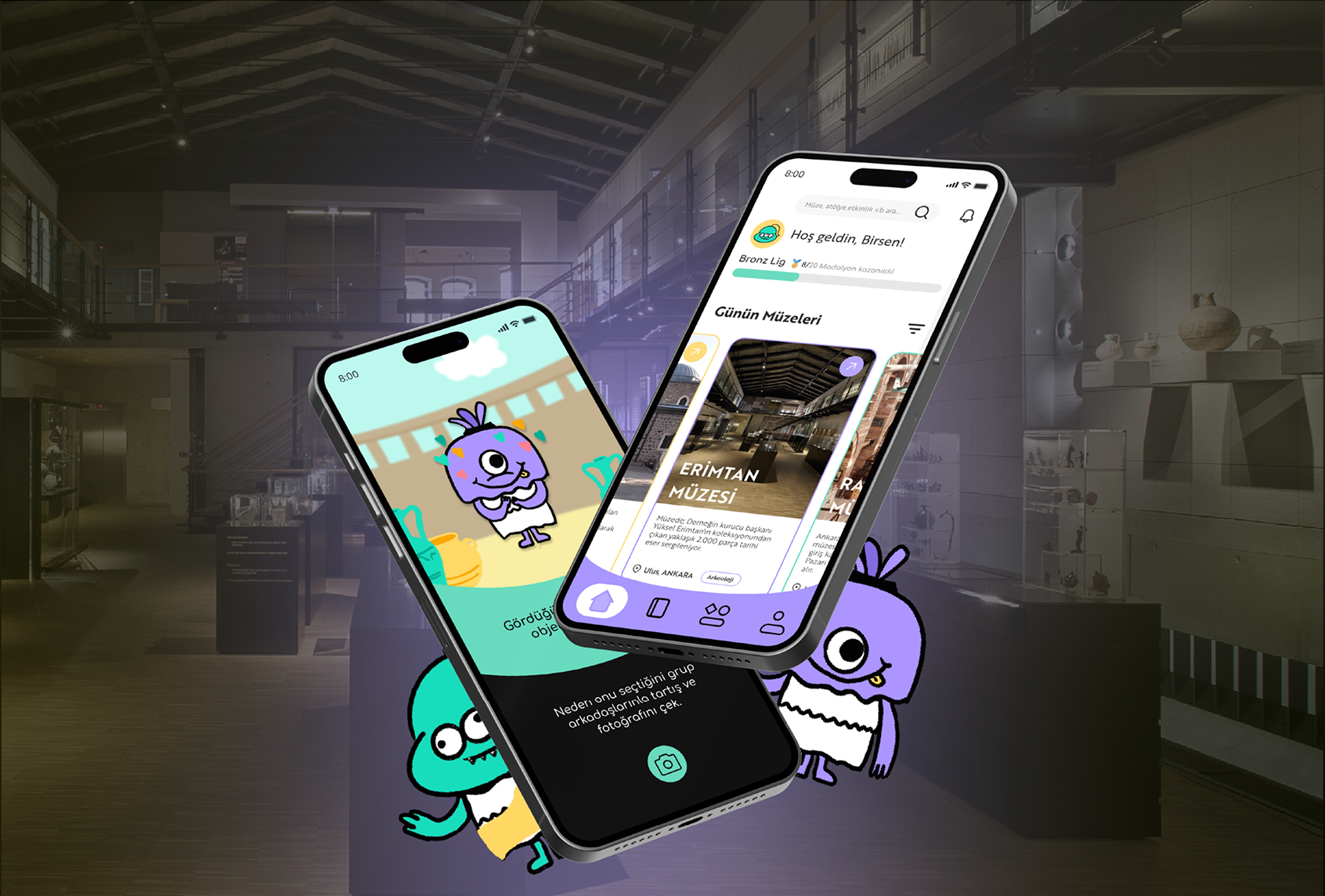Google Cine is designed around the pre-film, during-film, and post-film phases through a redesigned user interface and remote control. Together, these features provide an alternative to cognitive overload by enabling more meaningful engagement and a deeper understanding of films.
Details
Hands-on-testing
with participants
Card Sorting
for remote control interface
Makey Makey Kit
used for prototyping interactions
Role
• Project research & Ideation
• User testing & Usability evaluation
• TV prototypes with Makey Makey integration
Language
English
Main language
Context
The project introduces three innovative discovery modes—Speed, Mood, and Discovery—alongside a personalised newsletter helping users easily find a film that best matches their preferences. During viewing, a seamless bookmarking feature allows users to save moments for later reflection without interrupting their experience. After the film, a centralised Post-Film Dashboard supports deeper engagement through reflection tools and content recommendations.
Operating TV System: Google TV
Remote Model: Mi TV Stick

Process
- Conducted research to define Google Cine’s rationale, identifying user needs and positioning within the streaming ecosystem. Mapped user profiles and behaviors to guide TV setup and interaction.
- Applied participatory design to create intuitive UI and remote navigation; ran iterative user testing to assess usability and engagement.
- Developed prototypes and final UI/remote designs, supported by a comprehensive design system.
Research
Survey
In-depth interviews
Cognitive walkthrough
Expert evaluation
Heuristic evaluation
Open card sorting
Usability test
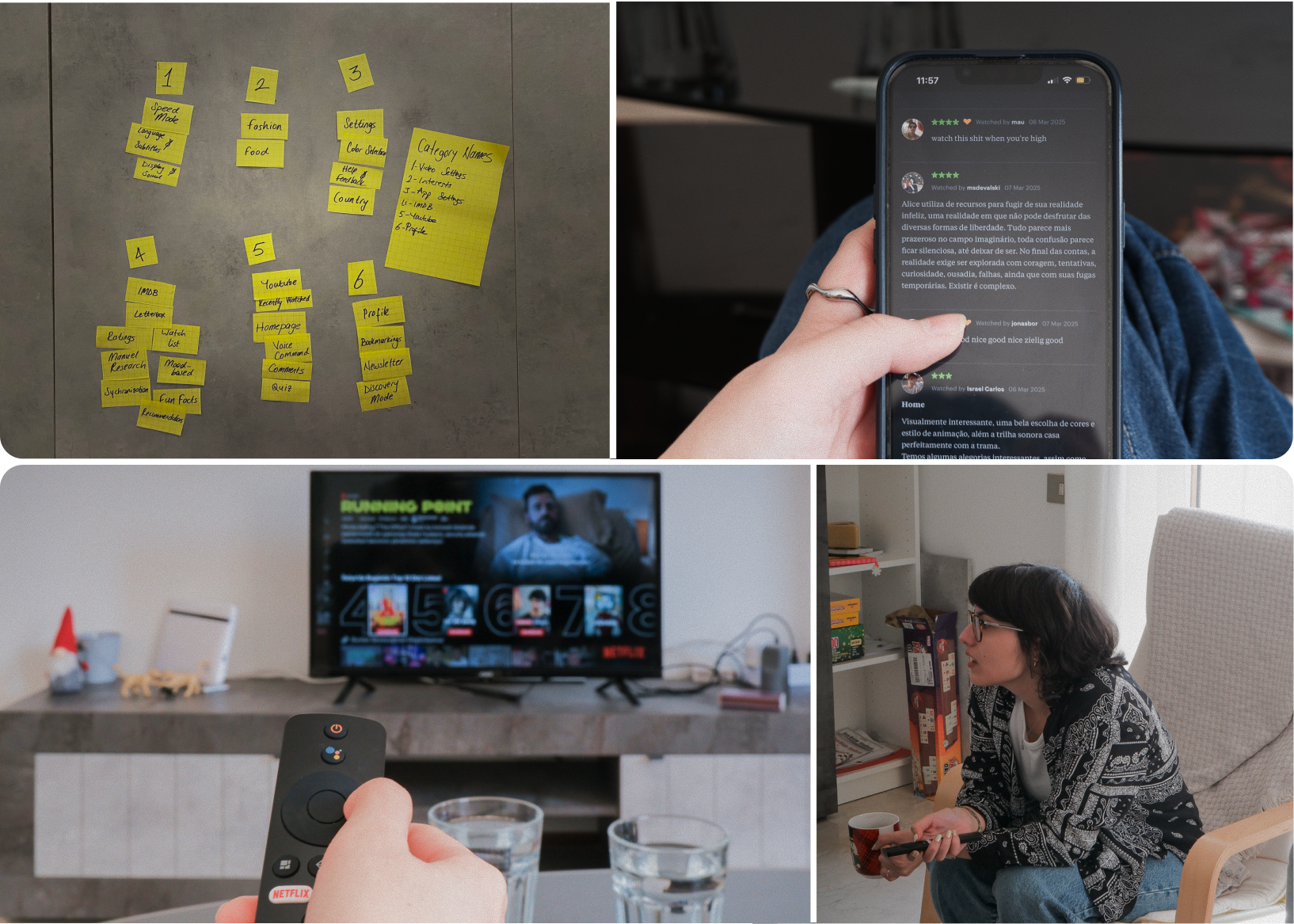
Target Audience: Film Lovers
Film lovers were chosen as the target group for their diverse and intentional behaviors, including frequent streaming, active decision-making, and engagement beyond the screen.
The synthesis process was modeled after Alan Cooper’s Persona Creation Process, which helped the personas to be defined with greater clarity. Two personas were obtained by the end of the process.


Key Insights
After key behavioural patterns were extracted from our user observations, the patterns were analysed in greater depth to explore the hidden motivations and unmet needs that users might be facing. During this process, relevant patterns with similar underlying intents or drivers were merged, allowing more meaningful and actionable insights to be surfaced and their relationships within the experience to be examined.


Remote Control with MakeyMakey
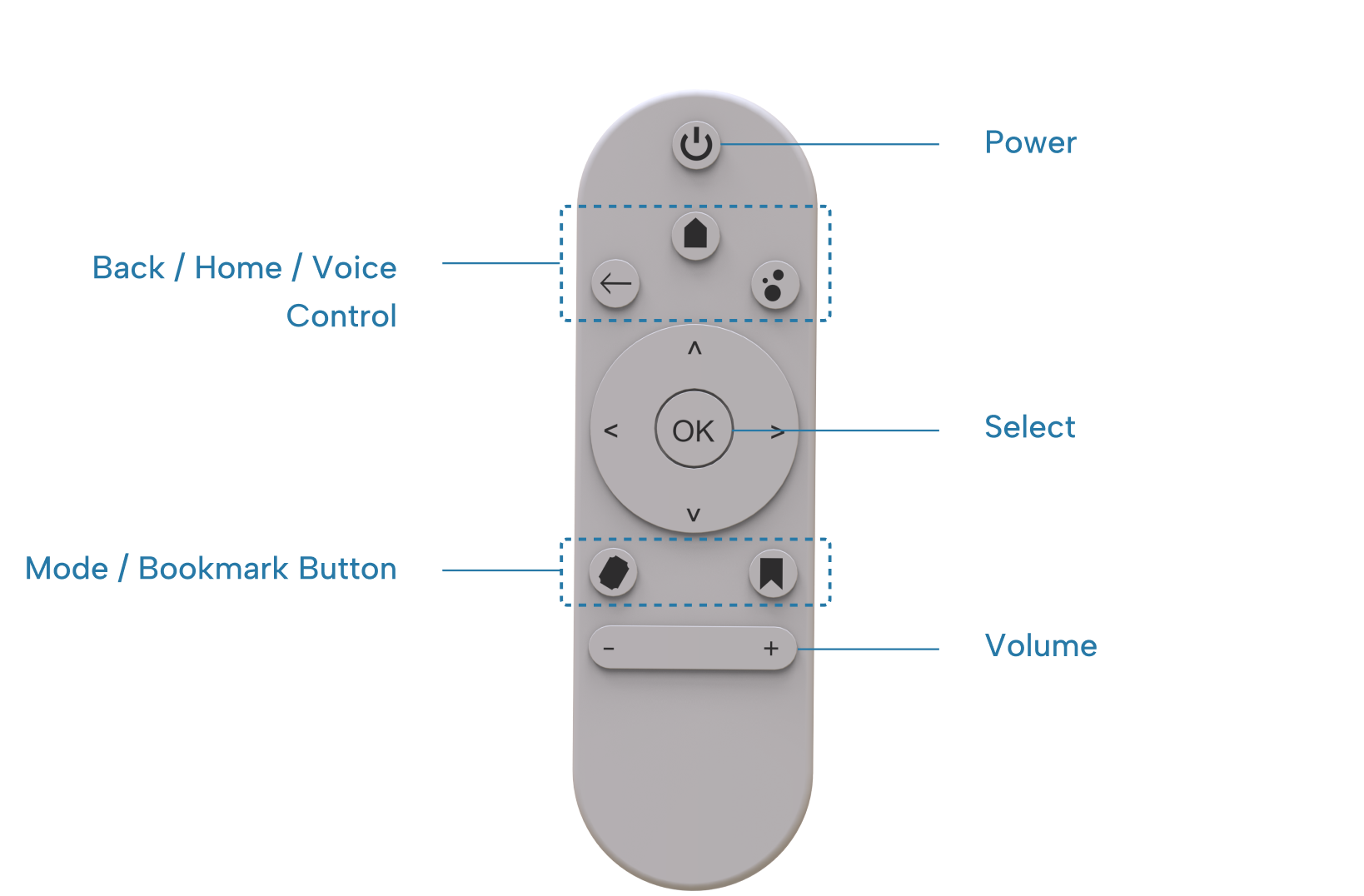
The redesigned remote control features an ergonomic form with default functions, directional buttons, and dedicated film-related keys. The Mode button enables direct access to discovery modes, while the Bookmark button lets users revisit saved scenes for quick navigation and deeper engagement.

Final Design

Newsletter, Creating Structure without Restricting Users
Users receive curated suggestions and contents based on their film interests, past engagement and cultural trends. A soft filter that eliminates the need for them to filter through endless options of films to find one they like.
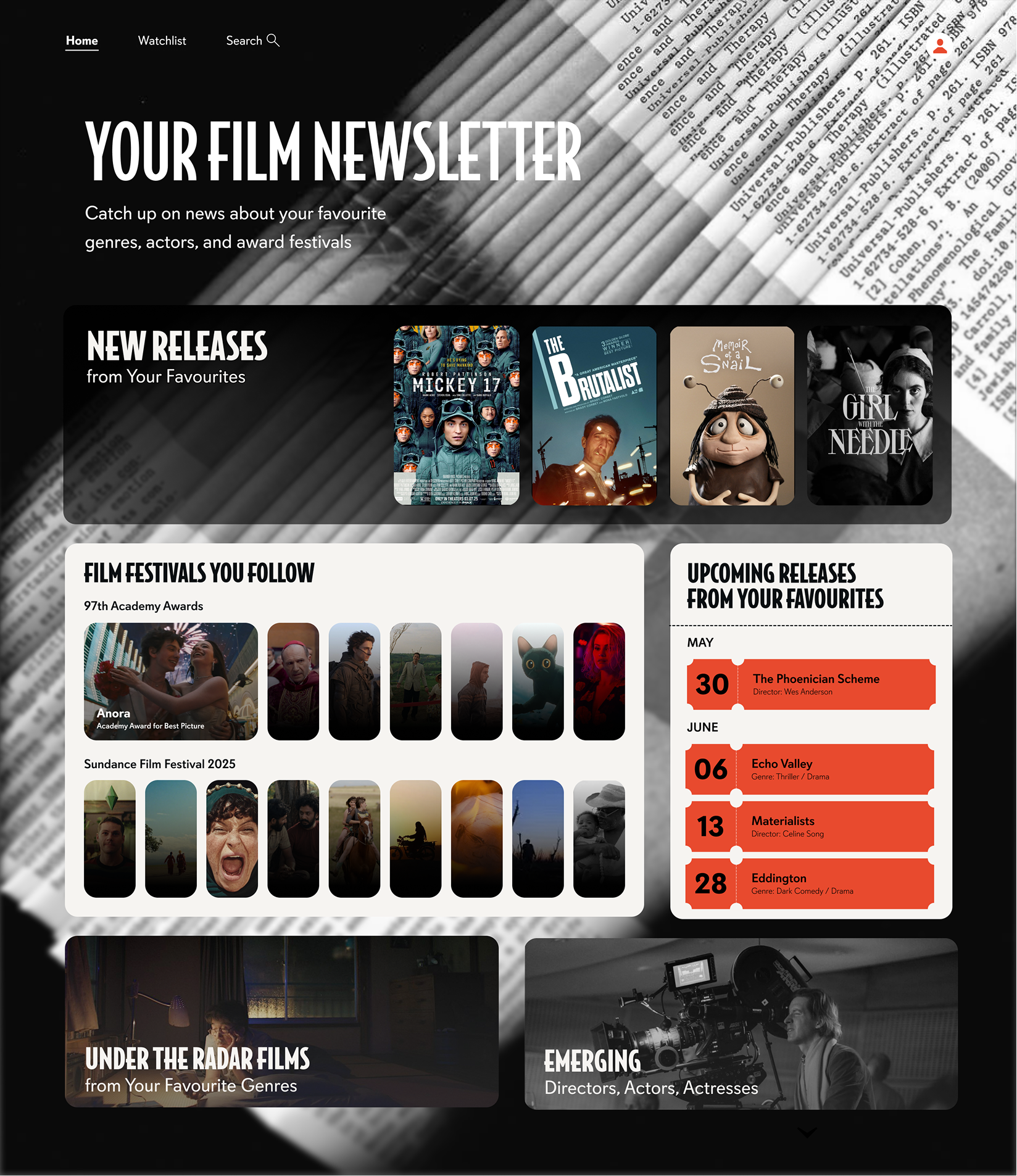
Mode Prompt
The Mode Prompt appears after 15 minutes of streaming service browsing, interrupting endless scrolling to offer alternative modes for quicker, more satisfying film discovery. Users can then click the Mode button to explore these three options.

Key Objectives: Speed Mode
Rooted in Insight #1, this feature streamlines film selection by introducing structured binary A/B choices to minimise users' cognitive load. A built-in time constraint encourages fast, goal-oriented browsing, minimising passive scrolling and enabling quicker, more meaningful film choices.
Key Objectives: Mood Mode
Mood Mode taps into the user’s current emotional state through abstract cues like quotes, metaphors, or archetypes, delivering recommendations that resonate with how they feel rather than just what they think they want. By relying on intuitive, emotion-based prompts and gut reactions, it reduces cognitive load and enables quicker, more instinctive decisions.
Key Objectives: Discovery Mode
Discovery Mode interrupts passive browsing by replacing generic carousels with structured yet flexible categories such as Film Style, Time Period, and Social Lens. By narrowing the search space into three meaningful entry points, it reduces cognitive load and makes film selection feel less overwhelming. Browsing becomes a learning experience, exposing film lovers to a richer diversity of genres, auteurs, and historical contexts.
Scene bookmarking
Enables users to mark moments of emotional, visual, or thematic interest, encouraging active and reflective viewing. Users can easily revisit scenes with contextual layers for deeper understanding, all within a seamless, friction-free experience.
Post-Film Dashboard
Unifies post-film interactions in a single Google TV hub, offering reviews, commentaries, and related content. Supports deeper engagement through bookmarked scenes, curated YouTube playlists, and Spotify mixes, while community features encourage perspective-sharing and discussion.

Results
User testing confirmed that the interface was intuitive and easy to navigate, with only minor issues reported. The design successfully streamlined film selection and reduced idle browsing, while centralizing pre- and post-film activities into one cohesive hub. By enhancing efficiency and deepening engagement, Google Cine demonstrates its potential to become an essential platform for film lovers.
Team: Şevval Samgam, Madeline See, Tee Jia Yu, Francesca Cetrullo
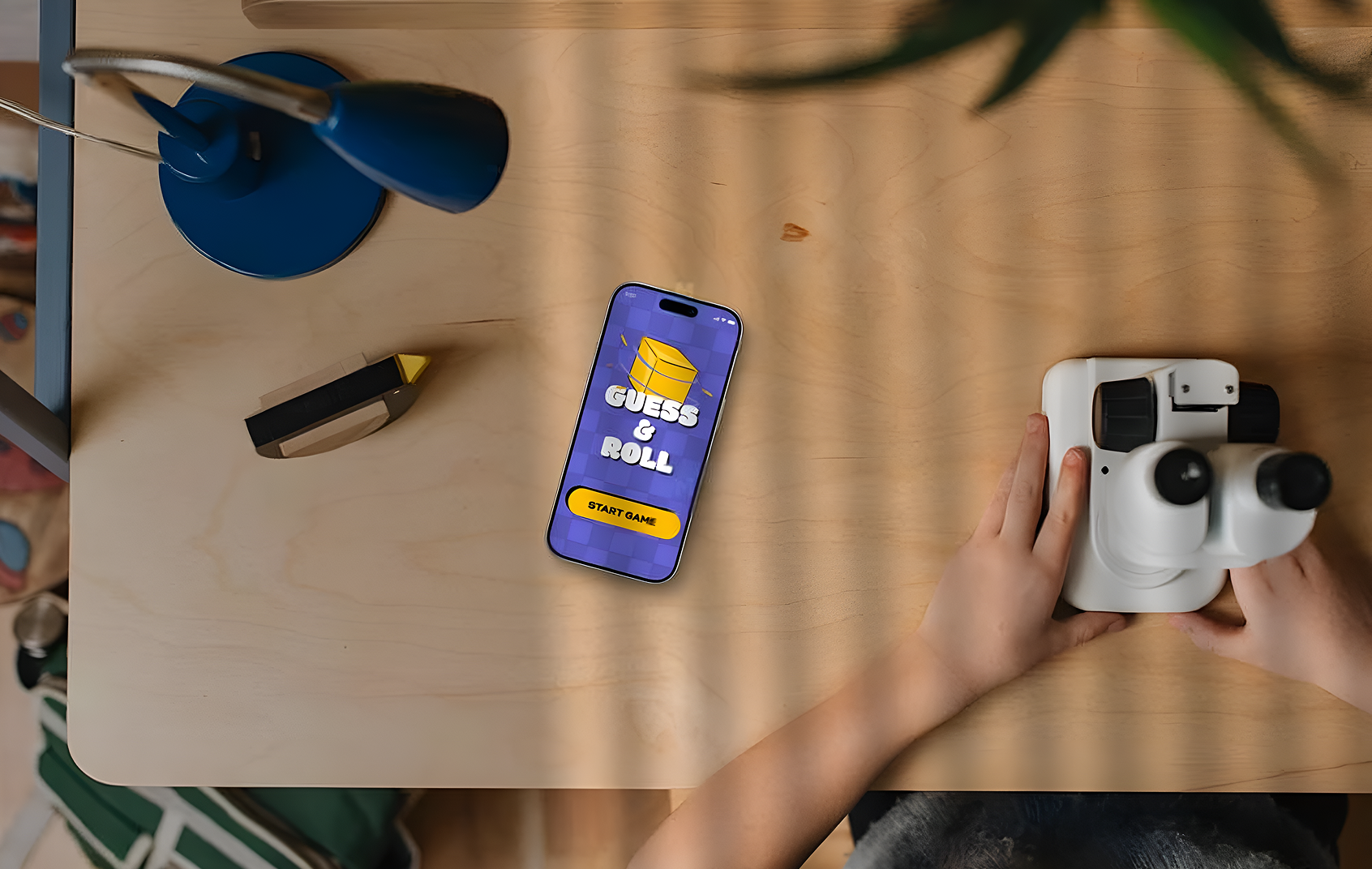
Guess & Roll
